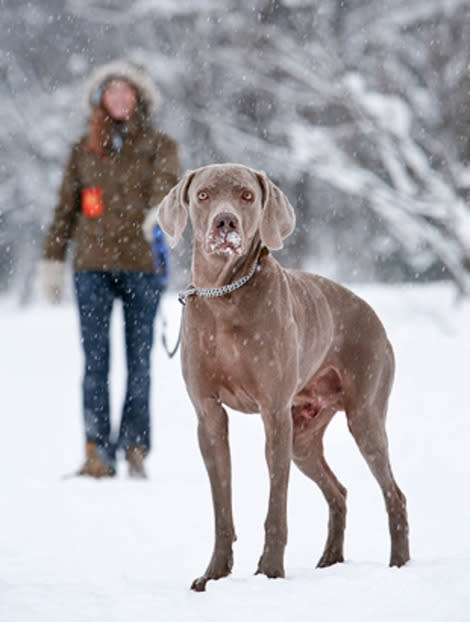7 Ways to Keep Your Pets Safe This Winter

When temperatures drop, snow flies, and cold winds blow, you know how to bundle up and stay warm. But your pets don't. Your cat or dog needs your help to stay warm, dry, comfy, and safe. Use these simple tips to protect your cat or dog from winter weather.
Bundle up. Dog booties and winter garb may seem silly, but they protect pets' paws, maintain body heat, and make great conversation starters with the neighbors. Winter gear is especially smart to protect an older, arthritic dog. But beware: A sweater won't protect a pet left for hours (or even minutes) in subzero temperatures.
Related: 8 signs your cat may have arthritis.
Use a leash. Whether taking your pet out for a quick bathroom break or a long walk, always use a leash. Animals become easily disoriented -- and lost -- in winter storms. Drivers on winter roads are less likely to spot a dog or cat dashing into the street, especially from a driveway lined with tall snow banks. And free-roaming pets can easily fall through thin ice on ponds and streams.
Wash those paws. Carefully wash your pet's paws, legs, and undercoat after every outdoor excursion. Ice balls can accumulate on fur and between paw pads, and cause bleeding or even frostbite. Antifreeze, salt, and other harsh chemicals licked from paws can lead to serious digestive upset or death.
Related: Learn how spending time with Fido or Fluffy helps lower your cholesterol.
Bring 'em inside. Think that thick fur coat on your Siberian husky or Angora cat will protect it from hypothermia? Think again. Animals not only suffer frostbite (on ear tips, tails, and toes especially), they can also freeze to death, regardless of breed. Bring your dog or cat inside when temperatures are frigid -- even if it's into the garage with a space heater, a thickly padded pet bed, and a pile of blankets (up off the cold concrete floor).
Related: Find out how living with a dog can help you feel younger. Take the RealAge Test.
Warm up outdoor shelters. If your pooch uses a doghouse or shed, line the interior with plenty of hay, wood chips, and blankets that you change frequently. Pets drag in snow, ice, and mud with every trip from the outside. Position the opening away from blowing wind, snow, and rain -- and install a plastic door flap and heated floor mat.
Keep car safety in mind. You know not to leave a pet in a hot car in summer. Same goes in winter: Don't leave your cat or dog alone in the car in cold weather, as they can easily freeze to death. Cats in garages and outdoors who seek warmth inside car engines are often killed or injured when the motor is started, so honk your horn or bang on the hood before starting the engine.
Change outdoor water bowls often. Your pet is unlikely to lick frozen ice from outdoor water bowls, and can quickly become dehydrated. Change the water frequently or purchase a heated water bowl.
Get more health tips from RealAge:
See how to get younger in 2012: Take the new RealAge Test today.
Have grandkids? Make time for this.
Which gets teeth whiter: electric or manual toothbrush?
